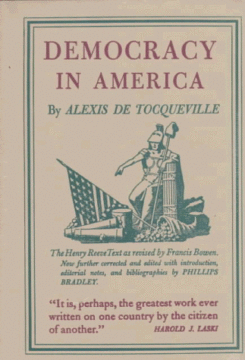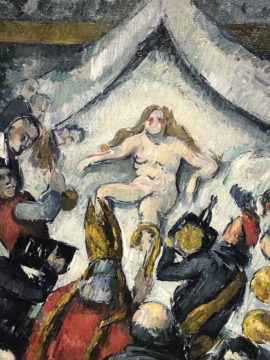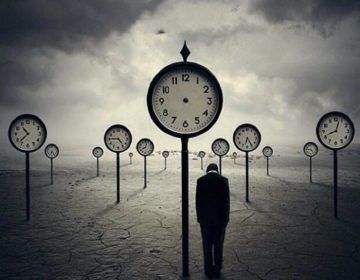by Brooks Riley

Though we are an aggregator blog (providing links to content elsewhere) on all other days, on Mondays we have only original writing by our editors and guest columnists. Each of us writes on any subject we wish, and the length of articles generally varies between 1000 and 2500 words. Our writers are free to express their own opinions and we do not censor them in any way. Sometimes we agree with them and sometimes we don’t.Below you will find links to all our past Monday columns, in alphabetical order by last name of the author. Within each columnist’s listing, the entries are mostly in reverse-chronological order (most recent first).
by Brooks Riley

by Tim Sommers

When people say they want equal opportunity, what do they really want? If what they want is whatever it is that the opportunity is an opportunity for, are they really interested in the opportunity at all? Or are they motivated by what de Tocqueville called “the charm of anticipated success”?
Well, there is at least one, quite profound thing, that people want when they say they want equal opportunity. They want to not be discriminated against. Of course, a theory of justice that was silent on all forms of discrimination would be, to use a technical term, bad. Kant defended nondiscrimination two-hundred twenty-nine years ago like this. “Every member of the commonwealth must be permitted to attain any degree of status…to which his talents, his industry, and his luck may bring him; and his fellows may not block his way by [appealing to] hereditary prerogatives.” (One problem is the way Kant keeps saying “his.” It raises the question what counts as a “prerogative.”) Believe it or not, Napoleon endorsed roughly the same idea and popularized this phrase for it: “La carrier est ouvérte aux talents” (careers open to talents).
For the sake of argument, I will assume that a plausible theory of justice says that everyone should have certain (i) basic liberties, the (ii) right to not be discriminated against or equal opportunity, and that in a just society (iii) the distribution of wealth should not be too unequal. Now let’s distinguish between formal equality of opportunity and substantive equality of opportunity. Read more »
by Dwight Furrow
 Today “skepticism” has two related meanings. In ordinary language it is a behavioral disposition to withhold assent to a claim until sufficient evidence is available to judge the claim true or false. This skeptical disposition is central to scientific inquiry, although financial incentives and the attractions of prestige render it inconsistently realized. In a world increasingly afflicted with misinformation, disinformation, and outright lies we could use more skepticism of this sort.
Today “skepticism” has two related meanings. In ordinary language it is a behavioral disposition to withhold assent to a claim until sufficient evidence is available to judge the claim true or false. This skeptical disposition is central to scientific inquiry, although financial incentives and the attractions of prestige render it inconsistently realized. In a world increasingly afflicted with misinformation, disinformation, and outright lies we could use more skepticism of this sort.
In philosophy, “skepticism” refers to the theoretical position that no claim satisfies the requirements for genuine knowledge. It is a move in the long-standing debate about the nature of knowledge and justification. However, this modern, theoretical use of the term harkens back to an ancient philosophical tradition that viewed skepticism, not solely as a theoretical position, but as a way of life. As the debate about philosophy as a way of life has emerged in the past several decades, this ancient view of skepticism has received some discussion. It’s worth considering what it can contribute to that debate.
Is skepticism a coherent way of life?
Most of the discussion makes use of the argument provided by Sextus Empiricus, who lived in the second or third century CE somewhere in the Mediterranean region and whose works have survived largely intact. The basic argument is this:
A good life should be as free from psychological disturbance as possible. Thus, a good life is a life of tranquility. Philosophical argument is the means through which we can achieve tranquility.
If you have attended seminars in philosophy, you might question this claim but bear with me. Read more »
by R. Passov

We are on the train from Lisbon to Cascais. They, riding with their backs in the direction of the train, sit across from me. I am next to a middle-aged woman, smiling, well-coiffed, dressed in white. I fail to speculate on why she heads toward the wealthiest enclave in Portugal where, it has been said, ex-dictators peacefully sun-away the last years of their lives.
I had been in conversation with Ananda before getting on the train. We wandered toward each other to exchange the partial pieces of directions we owned; directions on how to get from our seminar to the museum in that beach town to enjoy a showing by a famous artist who had something to do with the co-founder of our seminar.
Ananda is from Brasilia, a place I had learned about in the 6th grade and that somehow stayed with me as a Shang ri-La gone astray – an attempt at the future that ultimately lost to the jungle. But Ananda says it’s not in a jungle. Instead, it’s on a giant plain, away from the jungle. It’s the capital and 3 million people live there. Yet I press on with my memory, still seeing the place as a grand replica of Kennedy airport with its 60’s modernism, just empty of passengers. But it’s not like that, Ananda argues. Yes, it’s aged like things are let to age in Latin America, not like in America where you go crazy trying to fill in the cracks.
To get past Brasilia I ask Ananda about the economy and the mood in Brazil, trying to gain insight into whether my small investment in Brazilian government bonds is safe; hoping to hear what I want to believe – that Brazil is strengthening its judiciary, an important step toward improving its investment climate. Ananda smiles. Things are bad, she says. Bad and not getting better. Perhaps I was hoping for drinks later alongside her sun dress, fun glasses, hair that runs away from her ears and the smile. Read more »
by Ethan Seavey
 If you look at my profiles online, they are catered to appear normal, if dated. I haven’t posted very much over the past few years, and those that I have posted have been relatively mundane, which mark the relatively mundane moments of my life. They’re honest and small, like a photo of the street as I walk to school, or a picture of my friends at a park. My profile molds itself to match me.
If you look at my profiles online, they are catered to appear normal, if dated. I haven’t posted very much over the past few years, and those that I have posted have been relatively mundane, which mark the relatively mundane moments of my life. They’re honest and small, like a photo of the street as I walk to school, or a picture of my friends at a park. My profile molds itself to match me.
My feed, however, tells a different story. If you were able to see what I am gifted by the algorithms of Snapchat, Youtube, and Instagram you would have a wildly different opinion of me. Scroll just a little and you’ll hear phrases like “Men hit their prime at 30-40, while women peak in their early 20s” and “when I get married, she won’t get access to my bank account; she’ll receive an allowance of 2 million a year; you can’t trust them, I’m serious.” A couple of months ago, my feed looked nothing like this. There were memes about Pokémon, ads for mobile games, and prank compilations. Now, my feed is full of straight white men teaching me how to power up my masculinity.
The ease with which I was able to deliberately change to this side of social media does worry me. For no other reason than the fact that I didn’t want to download Tiktok, I started watching the TikToks which appear in my Snapchat Spotlight feed. The idea, though, is the same: an infinite stream of short videos. The randomness to the media is part of the allure. Every time you swipe you can find a new video. If you engage with a video, by liking or sharing, or even by lingering on the video until it has finished, the algorithm learns to give you more similar content. That’s why when I started watching Spotlights I received only mobile game ads, because I had recently deleted all games from my phone and would listlessly watch others play them instead. Read more »
by Shadab Zeest Hashmi
 Before I met Hayat Nur Artiran, I had only had a raw understanding of what female selfhood may look like, a notion I have been attempting to refine in my writings over many years. Here, at the Mevlevi Sufi lodge in Istanbul, I received a lifetime’s worth of illumination about the power of the spirit in the company of Nur Hanim, beloved Sufi Hodja and the President of the Sefik Can International Mevlana Education and Culture Foundation. A researcher, author and spiritual leader on the Sufi path known as the Mevlevi order (based on the teachings of Maulana Jalaluddin Muhammad Balkhi Rumi, known in the West simply as the poet Rumi), Nur Hanim’s accomplishments shine a light on an ethos that has transformed hearts for nearly a millennium. More instrumental than personal achievement in this case, is the Sufi substance and finesse that Nur Hanim has nurtured in the running of this Mevlevi lodge. Spending a day here, on my most recent visit to Istanbul, I came to experience what I had thought possible, based on my Muslim faith, but had never witnessed before: men and women coexisting, learning, working and serving in harmony, a place where one forgets the ceaseless tensions between genders, generations, ethnicity, or those caused by differences in religious beliefs or the self-worshipping individualism that has become the insignia of modernity. Read more »
Before I met Hayat Nur Artiran, I had only had a raw understanding of what female selfhood may look like, a notion I have been attempting to refine in my writings over many years. Here, at the Mevlevi Sufi lodge in Istanbul, I received a lifetime’s worth of illumination about the power of the spirit in the company of Nur Hanim, beloved Sufi Hodja and the President of the Sefik Can International Mevlana Education and Culture Foundation. A researcher, author and spiritual leader on the Sufi path known as the Mevlevi order (based on the teachings of Maulana Jalaluddin Muhammad Balkhi Rumi, known in the West simply as the poet Rumi), Nur Hanim’s accomplishments shine a light on an ethos that has transformed hearts for nearly a millennium. More instrumental than personal achievement in this case, is the Sufi substance and finesse that Nur Hanim has nurtured in the running of this Mevlevi lodge. Spending a day here, on my most recent visit to Istanbul, I came to experience what I had thought possible, based on my Muslim faith, but had never witnessed before: men and women coexisting, learning, working and serving in harmony, a place where one forgets the ceaseless tensions between genders, generations, ethnicity, or those caused by differences in religious beliefs or the self-worshipping individualism that has become the insignia of modernity. Read more »
by Eric Bies
 May of 1851, London, the world’s first World’s Fair.
May of 1851, London, the world’s first World’s Fair.
Just about Anyone who was (or was bound to be) Anyone was in attendance at the Great Exhibition of the Works of Industry of All Nations—a mouthful—among them: Charles Babbage, Charles Darwin, and Charles Dickens; Charlotte Brontë, Lewis Carroll, and George Eliot; Karl Marx, William Morris, and Alfred Tennyson; Tolstoy (a playboy, beardless and boyish) and Flaubert (accompanied by his mother).
If we were there we could have followed them: down the paths and over the lawns—beneath the little boys perched in the trees—thousands of visitors, many of whom had patronized this stretch of Hyde Park in the past, now encountered a new kind of structure rising from the green. Taking it all in, the word “magnificent” sprang to mind; in a chorus they called it the Crystal Palace—and no wonder, with its million square feet of floor space and monumental façade of leaping glass and iron.
 What all went inside? Apart from the full-grown trees and gallant blocks of statuary, a quick glance at a single page of the Exhibition’s Official Descriptive and Illustrated Catalogue instantly gluts the eye. This taxonomical mountain of close-set type, ranging over 3,000 pages in four volumes, threatens an avalanche of things: a portable steam engine, a hydraulic seed press, a pedestal planisphere, a bath of enameled copper, Irish bog-yew furniture, a triform railway signal, crystals of sulfate of iron, an overshot water-wheel, a hydraulic lifting jack, a low-bodied dog cart, a self-acting duplex lathe, an India-rubber air-gun, a liquid manure cart, a sheep-dipping apparatus, bar and frame beehives, an imitation oak timepiece, a black marble timepiece, a couch designed for invalids, a salinometer, an electric telegraph, racing whips, a pyro-pneumatic stove-grate, ornamented fire-dogs, a copper coal-scuttle, vulcanized valve-cocks, an Etruscan tea-urn, serpentine obelisks, a battle-ax, a shield of deer-skin, a bark canoe, a scale model of the steam-ship Medea—and much, much more. Read more »
What all went inside? Apart from the full-grown trees and gallant blocks of statuary, a quick glance at a single page of the Exhibition’s Official Descriptive and Illustrated Catalogue instantly gluts the eye. This taxonomical mountain of close-set type, ranging over 3,000 pages in four volumes, threatens an avalanche of things: a portable steam engine, a hydraulic seed press, a pedestal planisphere, a bath of enameled copper, Irish bog-yew furniture, a triform railway signal, crystals of sulfate of iron, an overshot water-wheel, a hydraulic lifting jack, a low-bodied dog cart, a self-acting duplex lathe, an India-rubber air-gun, a liquid manure cart, a sheep-dipping apparatus, bar and frame beehives, an imitation oak timepiece, a black marble timepiece, a couch designed for invalids, a salinometer, an electric telegraph, racing whips, a pyro-pneumatic stove-grate, ornamented fire-dogs, a copper coal-scuttle, vulcanized valve-cocks, an Etruscan tea-urn, serpentine obelisks, a battle-ax, a shield of deer-skin, a bark canoe, a scale model of the steam-ship Medea—and much, much more. Read more »
by Pranab Bardhan
All of the articles in this series can be found here.
 Another cultural benefit of my travels, particularly in early days, used to be my exploration of international cinema. I have already mentioned how going out of India I became exposed to a riot of European art films. In later years I also saw some superb art films from Argentina, Brazil, Japan, Iran, South Korea, and Taiwan. In the US in many cities some of these art films were not always easily available, and I sometimes saw them in visits to New York or London, though with some lapse of time Pacific Film Archive in the Berkeley campus showed some good international films. Every time I went to Kolkata my friend Samik Banerjee told me about the new Bengali art films that came out in the months I was away and sometimes took me to their special screenings. Through him I came to know some of the major film directors and actors in Kolkata. Meanwhile the quality of American films improved a great deal. But the general commercial film world in the US largely catered to adolescent fantasy worlds or antics of superheroes from comic books or dystopian science fiction, none of which held much attraction for me. Even in more grown-up American films one often missed the sharp, witty, historically informed, and politically engaged conversation of friends and also a kind of cerebral sexuality that I used to associate with French films, for example– a character in Godard’s film Contempt famously said in bed: “I love you totally, tenderly, tragically”.
Another cultural benefit of my travels, particularly in early days, used to be my exploration of international cinema. I have already mentioned how going out of India I became exposed to a riot of European art films. In later years I also saw some superb art films from Argentina, Brazil, Japan, Iran, South Korea, and Taiwan. In the US in many cities some of these art films were not always easily available, and I sometimes saw them in visits to New York or London, though with some lapse of time Pacific Film Archive in the Berkeley campus showed some good international films. Every time I went to Kolkata my friend Samik Banerjee told me about the new Bengali art films that came out in the months I was away and sometimes took me to their special screenings. Through him I came to know some of the major film directors and actors in Kolkata. Meanwhile the quality of American films improved a great deal. But the general commercial film world in the US largely catered to adolescent fantasy worlds or antics of superheroes from comic books or dystopian science fiction, none of which held much attraction for me. Even in more grown-up American films one often missed the sharp, witty, historically informed, and politically engaged conversation of friends and also a kind of cerebral sexuality that I used to associate with French films, for example– a character in Godard’s film Contempt famously said in bed: “I love you totally, tenderly, tragically”.
Then, of course, came the days of DVD’s, and I became an avid member of several video stores in Berkeley. Different video stores, particularly the smaller ones, gave me the opportunity to savor a wide variety of international movies. I remember once when I heard about a new video store opening in a corner of Berkeley, in the very first week I went there and tried to see in what way their international DVD collection was distinctive. I got to talk to the young man who was the store owner-manager, and soon we were deep into our respective likes and dislikes in movies. I told him that there were some international movies which were in everybody’s list of all-time greats but not in mine (to take examples just from 1960’s films, say, Godard’s “Breathless”, or “Last Year in Marienbad” by Resnais—I actually liked the latter’s film “The War is Over” much more–, or “L’Aaventura” by Antonioni). Similarly, there were some movies that critics or film scholars did not quite rave about but I wanted to see them again and again (say, “The Double Life of Véronique” by Krzysztof Kieślowski from Poland, or “We All Loved Each Other So Much” by Ettore Scola from Italy, or “Landscape in the Mist” by Theo Angelopoulos from Greece)—I think it was more a matter of harmony with my temperament than technical qualities of the films. The young man gave me his preferred lists and we animatedly discussed them. At one point he shouted toward an inner room in the store where his wife was busy sorting out their new arrivals of DVD’s. He told her, “You call me a movie-maniac, come and see, here’s another one!” Read more »
Editor’s Note: Frans de Waal’s new book, Different: Gender Through the Eyes of a Primatologist, has generated some controversy and misunderstanding. He will address these issues in a series of short essays which will be published at 3QD and can all be seen in one place here. More comments on these essays can also be seen at Frans de Waal’s Facebook page.
by Frans de Waal

The violence of men against women is one of the most blatant and dangerous aspects of gender inequality, an issue often ignored by men but of obvious concern to women.
In many primates, males are bigger and stronger than females. The same applies to humans, in which the two genders show little overlap in upper body strength. In one German study, highly trained women athletes reached only the average physical strength of untrained men.
The evolution of sexual dimorphism in size and strength is thought to be driven mostly by male-male competition. The main purpose of greater male size is not dominance over females, but competition with rivals. In humans, this competition is reflected in the homicide statistics of most countries, including the US, in which male-on-male murders prevail.
Nevertheless, male violence against females is common. In our societies, spousal abuse, rape, and femicide are either on the rise or more frequently reported. It is a domain in which the human species stands out by its exceptionally high incidence. Since it often occurs between individuals who are close, one contributing factor is the habit of human families to live in relative isolation in huts and houses. These arrangements, which are unique among the primates, facilitate male control. During the Covid crisis and its lock-down policies, domestic abuse increased worldwide. Read more »
by David J. Lobina

A central property of human thought is the ability to combine two propositions (or thoughts) into complex mental representations, an exemplified by the so-called compound sentences from language, such as the triangle is yellow AND/OR the square is blue, where each clause constitutes a proposition, or thought (the triangle is yellow; the square is blue), and the coordinators “and/or” function as the sentential operators, or connectives, from formal logic (and would be the conjunction connective and or the disjunction connective).
The role of formal logic to examine the ability to represent complex thoughts has been especially fruitful in experimental work on how we represent, and reason with, compound propositions. Indeed, formal logic has informed our understanding of human reasoning since antiquity and remains relevant to modern cognitive science.
Nevertheless, compound sentences often appear to behave in ways that diverge from what is the case in logic. Conjunction and, for instance, can signal much more than a simple union of propositions, which is what logic mandates – e.g., it can mark a temporal, and even causal, relationship between two clauses, as in the bomb exploded and the house was destroyed, which certainly suggests these two events are connected.
The consensus in the literature, however, is that the meaning – the semantics – of compound sentences and coordinators such as and and or is analogous to the meanings logicians assign to compound propositions and connectives in terms of truth tables, with the corollary that the non-logical uses compound sentences exhibit in language use are the result of diverse pragmatic processes (presuppositions, implicatures, etc.). Read more »
“ A colossal weariness and also disgust at the thought that it takes a lot of hatred, a lot of zeal, to push a knife deep into someone’s eye. It is beyond the edge of human cruelty. And only an intact ideology, not available to disprove in any way, could bring you to the point.” —Author Ian McEwen, of the attack on Salman Rushdie
I’ve read too much history
to believe there is a cruelty
beyond the edge of human cruelty
because we are cruelty’s base definition,
therefore: history and the news
human cruelty has no edge,
it pushes all boundaries,
steps outside the ring of worse
with the ease of a dancer
moving with diabolical skill
it respects no prohibition
because it has no law,
ideology of faith is just a fig leaf
of which God is an excuse
because Man believes
there must be something
to forgive the devil in him
other animals prey and kill
only humans kill and pray
Jim Culleny
9/4/22
by Deanna K. Kreisel (Doctor Waffle Blog)
 What does the word “utopia” mean to the battle-scarred denizens of the twenty-first century? A shockingly unscientific survey of the nine or ten people I buttonholed last week suggests that the key connotations of the word are: ideal, perfect, imaginary, unrealistic, and unattainable. I’ve arranged these terms purposefully in that order, so that they imply not a static and fixed definition but rather a narrative arc, a falling away from hope into disappointment: all of the people I spoke to (students and colleagues at the large Southern state-flagship university where I teach, so a fair cross-section of ages, races, ethnicities, and genders) firmly believed that the word “utopia” denotes an unrealistic or quixotic goal. It’s not my thesis here that disappointment is the necessary fate of any utopian project, but it might be a provisional thesis that most people living in Western cultures today think that it is.
What does the word “utopia” mean to the battle-scarred denizens of the twenty-first century? A shockingly unscientific survey of the nine or ten people I buttonholed last week suggests that the key connotations of the word are: ideal, perfect, imaginary, unrealistic, and unattainable. I’ve arranged these terms purposefully in that order, so that they imply not a static and fixed definition but rather a narrative arc, a falling away from hope into disappointment: all of the people I spoke to (students and colleagues at the large Southern state-flagship university where I teach, so a fair cross-section of ages, races, ethnicities, and genders) firmly believed that the word “utopia” denotes an unrealistic or quixotic goal. It’s not my thesis here that disappointment is the necessary fate of any utopian project, but it might be a provisional thesis that most people living in Western cultures today think that it is.
As a Victorian literature scholar, I’m a little surprised at how pejoratively the word “utopian” is used today. Because I immerse myself in another historical period for my research and teaching, I am forced to move back and forth, somewhat vertiginously, between the Olden Times I study and the present moment; just like H. G. Wells’s Time Traveller, I sometimes find it takes a few moments to blink away the “veil of confusion” occasioned by my most recent trip home from the nineteenth century. For the Victorians the word “utopian” did not carry the negative connotations of impossibility, naïveté, and dunderheadedness that it does for us now—the writers and thinkers who used that word were for the most part engaged in actual utopian projects, whether literal or literary (or both).[1] Read more »
By Andrea Scrima
It’s said that European societies are always about assimilation, and that’s almost true, but not entirely. Minority cultures alter the dominant culture in subtle ways. My twenty-one-year-old son speaks with a Turkish-inflected accent he shares with most boys his age who have grown up in Berlin. It’s a mark of masculinity, of coolness, and the ones who go on to college eventually outgrow it—or don’t, because the ways in which it affects everyday German speech will only become apparent in hindsight, after its traces are already securely imbedded in the language. In Europe, the immigrant presence rarely finds acknowledgement in high culture, but you can see it wielding its influence on popular culture in subversive ways. The Turkish ghetto identity, which developed in response to the discrimination a younger, German-born generation of second- and third-generation migrant worker families continues to face there, particularly in the wake of German Reunification and the deadly xenophobic attacks that followed, has always identified heavily with Black American subculture. The Turkish-German assimilation of Hip Hop and Rap was seamless: it gave them a language, dealt embarrassing blows to German political correctness and its many blind spots, incorporated taboo themes otherwise held to be racist, sexist, or anti-Semitic, and posed questions that cultural commentators, at a complete loss, are still largely trying to evade.
which it affects everyday German speech will only become apparent in hindsight, after its traces are already securely imbedded in the language. In Europe, the immigrant presence rarely finds acknowledgement in high culture, but you can see it wielding its influence on popular culture in subversive ways. The Turkish ghetto identity, which developed in response to the discrimination a younger, German-born generation of second- and third-generation migrant worker families continues to face there, particularly in the wake of German Reunification and the deadly xenophobic attacks that followed, has always identified heavily with Black American subculture. The Turkish-German assimilation of Hip Hop and Rap was seamless: it gave them a language, dealt embarrassing blows to German political correctness and its many blind spots, incorporated taboo themes otherwise held to be racist, sexist, or anti-Semitic, and posed questions that cultural commentators, at a complete loss, are still largely trying to evade.
Some time ago, I went to see Almodóvar’s Pain and Glory with a friend; the film made us hungry, and when we reached Bahnhof Zoo we decided to have a Döner. The young Turkish men working there tried their macho number on us—that unquantifiable, unmistakably sexualized nonchalance as they performed a few moves to the music playing and neglected to take our orders until, appraising our appearance, they realized we were old enough to be their mothers and morphed almost instantly into respectful sons. Paying for our sandwiches, we tried to decide what had annoyed us the most about the film—whether it was the self-absorption and vanity, the male artist cliché, or the absence of any viable female roles apart from the idealized mother and doting assistant—when all at once the volume was cranked up loud and a young Turkish-German guy in a baseball cap came rushing inside and thrust his arms out ecstatically in response to the blaring music. The beat was so loud it penetrated the muscles in my arms and legs; when I heard the words “my neck, my back, lick my pussy and my crack” over and over, I jumped up and nearly accosted him. I don’t know what I’m doing in moments like these; the volume was earsplitting, and my body responded to the situation as it would to any other assault. I was shaking with a rage I rarely feel—a rage that wants badly to get into a fistfight, because my mind doesn’t understand that I’m a middle-aged woman and not a boy from the Bronx like my father was, and hence ridiculous—and as the fury blots out all thought, I feel the wave of physical aggression swelling inside me urgently seeking an outlet. The situation felt primal, imminently violent; distant epigenetic memories of war and bloodlust shivered in my veins. Turn the music off, I shouted, the lyrics are misogynistic. Read more »
 Sughra Raza. Public Garden Water Feature, Boston. June 2022.
Sughra Raza. Public Garden Water Feature, Boston. June 2022.
Digital photograph.
by Varun Gauri

Effective altruism is having a moment. Books in the field are getting prominent reviews, the Effective Altruism Global conference took place in Washington DC this past weekend, and the movement now has the backing of at least a couple tech billionaires. Not bad for a social movement that celebrates self-sacrifice.
The basic agenda of effective altruism (EA) is that people should a) give to charities; b) give to organizations and in ways that are the most effective, usually understood to be providing the most bang for the buck; c) give as much as they can, up to the point where they begin to sacrifice something of real moral importance.
Most people would agree that it’s good to give and silly to give to hopeless causes. But EA has a particular understanding of effectiveness: One should give to charities that save the most lives or reduce the most suffering, per dollar spent. The rationale for this argument is that the goal of giving (and perhaps of ethical action altogether) is to alleviate suffering and loss, irrespective of the identities of the sufferer and the donor. The goal of giving is not to make yourself feel good by supporting friends and family, your alma mater, a pet cause, or a cute child who happens to resemble your niece. The idea is to give with your head, not with your heart. Because needs are great in developing countries, and the cost of saving a life is so much lower, the upshot is that people should give mostly to organizations that effectively improve the lives of impoverished strangers in faraway places.
Most people would also agree that it’s good to give as much as you can. People praise saints and admire genuine philanthropists. EA, however, argues that everyone should give until they sacrifice something morally important. The reason you should give so much is that you, after all, are just another person, so you should compare the pain from spending marginally less on your own life (fewer dinners out, no luxury brands) to the benefit of spending more on the faraway impoverished stranger (averting episodes of life-threatening malaria, preventing blindness). Obviously, your own money is better spent elsewhere.
I don’t believe that any single theory has a monopoly on sound ethical reasoning. Following EA to its logical conclusions leads to some unsettling inferences. Suppose person A is extremely poor, severely disabled, very sick, and socially marginalized, so much so that charitable giving has little chance of enhancing or prolonging their life. Person B is not as poor, needs cataract surgery, and has access to (but can’t afford) health care. EA might argue that giving to charities promoting the life of person B is always preferable to giving to charities that target person A, given that person A’s quality of life can’t be improved. I’m uneasy with that conclusion because I think resources (and especially government programs) are valuable not only for the suffering they reduce; they are also a signal of respect, a recognition of human dignity, and a commitment to community and social inclusion.
In the mid to late 1990s, I was evaluating the World Bank’s HIV/AIDS programs in Brazil. In 1996, Brazil had begun to provide antiretroviral “cocktails” at a cost of more than $10,000 per patient per year. Many economists, writing at that time, were critical of the decision. They argued that HIV/AIDS spending should go almost entirely to prevention, rather than treatment, because, per dollar spent, one could avert more cases, and save more lives, with condom distribution than antiretroviral therapy.
Traveling across the country, I saw that access to treatment seemed to be making prevention efforts more effective — when vulnerable individuals and activists experienced hope and dignity, which treatment signified for them, they became more engaged in their own lives, and put more effort into prevention programs both for themselves and on behalf of others. Access to treatment helped to crystallize the Brazilian HIV/AIDS and human rights movement. That movement would eventually play a critical role in lobbying for expanded domestic production of HIV/AIDS medications in Brazil. It also helped inspire the international effort to permit developing countries to circumvent international patent restrictions on the production of generic drugs. Not only Brazil but Thailand, South Africa, and India began producing low-cost AIDS treatments. As a result, the price of those antiretroviral therapy quickly fell to less than a few hundred dollars per patient per year, a price that facilitated HIV/AIDS treatment in places as resource-poor as Haiti and Rwanda.
I’m broadly sympathetic to EA. I believe in reducing charity for vanity projects, like named university buildings or concert halls, and more generally, in making charitable giving more effective. I also believe that people should give more to distant strangers, and that if they did so the world would be a better place. Still, I suspect my work experience in Brazil points to a blind spot in EA. In the long run, most people want help not from strangers but from friends. They not only seek the mitigation of their suffering but the security that it won’t return; they want a measure of social recognition and the guarantees that go with it. The logic of EA, and its accompanying cost-effectiveness calculations, seem most suited to remaining a stranger, not a friend, to the people one is trying to help.
At least one or two of the big EA donors are investing in politics. But a political campaign is not a social movement. Social movements, like the one around HIV/AIDS in Brazil, could help tackle some of the major structural barriers that disadvantage poor people in developing countries. Those include odious debt (the sovereign debt taken on by corrupt and odious leaders, which citizens are obligated to repay), tax havens in rich countries that allow local capital to escape taxation, intellectual property rules raising costs and limiting innovation in developing countries, and the arms trade, to name a few. Those are complex challenges that will not, I believe, be resolved without significant social transformation and a new species of solidarity, which is a kind of friendship.
by Mark Harvey

There are a number of videos circulating on the web that show angry white people screaming at Mexicans and Mexican-Americans to “Go back to where you came from!” It takes a special brand of stupid for, say, a Texan living in a town with a name like Llano located in Llano County to tell a Mexican or Mexican-American to “go back to where they came from.” For when you’re in Texas—a different spelling of the Spanish Tejas—in a county named Llano, which means plain or flat in Spanish, and in a town also named Llano for its flat ground, and you find yourself yelling at someone named Garcia or Gallegos to go home, you might be the one with the problem.
In a country with state names like Colorado, California, and New Mexico, and city names like Santa Fe, Amarillo, La Junta, and San Diego, it’s obvious that explorers, ranchers, store owners, priests, and law men had previous history in what is now Mexico. Our forebears were not just the ones who landed on the east coast after crossing the Atlantic, but also the ones who came up from south of the border, long before a border existed.
More than 200 years before the United States was even a gleam in the eye of one of our revolutionaries, Spaniards traveling up from what is now Mexico were exploring the southwest. In 1540, Francisco Vasquez de Coronado set off on a two-year exploration in search of the mythological seven cities of Cibola with hopes of bringing home gold and silver. Leaving the territory of present day Mexico, he traveled through what is now Arizona, New Mexico, Texas and possibly Kansas. On his trip he encountered the Grand Canyon but never found the promised gold and his trip was considered a failure. Read more »
by Brooks Riley

by Mike Bendzela

How would you account for the following weird experience? Do you have a handy explanation, or do you dismiss it outright?
When I was twelve, Dad used to drop me off in the twilight in front of the parish across town to serve Mass, usually a Wednesday before dawn, because that was the time new altar boys served their shifts.
“Pray for me,” Dad would say as I got out of the car, “and for your poor mother’s soul.” He parked the car far down the block and sat there in the dark waiting for me to return from Mass — swigging whisky, I now assume, from his paper bag all the while.
The time I spent with my fellow altar boy, Michael, was a refuge from the horrors of home. We got dressed together, laid out brass artifacts and towels and books together, lit candles together. The priest who had my dad excommunicated was more than kind to me, and groomed me for the priesthood with effusiveness and, I saw later, with the intent to elevate me above my fallen parents. I didn’t want to leave the sacristy; I didn’t want to go back to my dad’s car; I wanted to camp out there with Michael, forever. Perhaps he and I could both become priests and secretly live there in the rectory. I even passed this by Father Frank.
He looked at me with something like triumph and affection. “It is not outside the realm of possibility,” he said.
After Mass, I nearly flew back to the car.
Once I was inside, dad asked, “Did you pray for us?”
I stared blankly. In my excitement about moving into the church with Michael, I had forgotten all about my ritual prayer for my parents.
The back story was something I would only learn much later from an aunt: During a rough spot in their marriage, my mother had become pregnant by another man, and Dad decided she should have an abortion (then illegal in our state); he took her where she could get one, and she died of sepsis. My father was consequently forbidden from setting foot in the Catholic Church he was raised in, even though he was prostrate with grief and remorse. He could do nothing to assuage the pain, not even drink it away. Read more »
by Carol A Westbrook

The intermittent taps on the roof roused me from a deep sleep, and then I remembered the acorns. The acorns had begun dropping. It was the first week of September, the days were still warm, and the leaves were still green. The leaves wouldn’t turn colors and start falling for several weeks yet.
But somehow our oak trees knew it was time to drop their acorns, and all twelve of our oaks began releasing their hard brown nuts with the little caps. The racket came from our larger trees which had branches over the roof; while the chipmunks, squirrels, rabbits, deer and other critters showed up to share the wealth before they bedded down for the winter.
It was acorn season. Acorn season starts at the same time as Pumpkin Pie Spice season does, but it lasts only as long as it takes for the trees to drop all of their nuts, about a week and a half. Pumpkin Pie Spice season, on the other hand, continues through Thanksgiving. Picture it. It’s early September, you are still wearing sandals and shorts, and winter is the last thing on your mind, when all of a sudden you pass a Starbucks and get a whiff of that alluring combination of nutmeg, allspice, ground cinnamon, ginger, and cloves, which, in true Proustian fashion, evokes pleasant memories of fall. Read more »